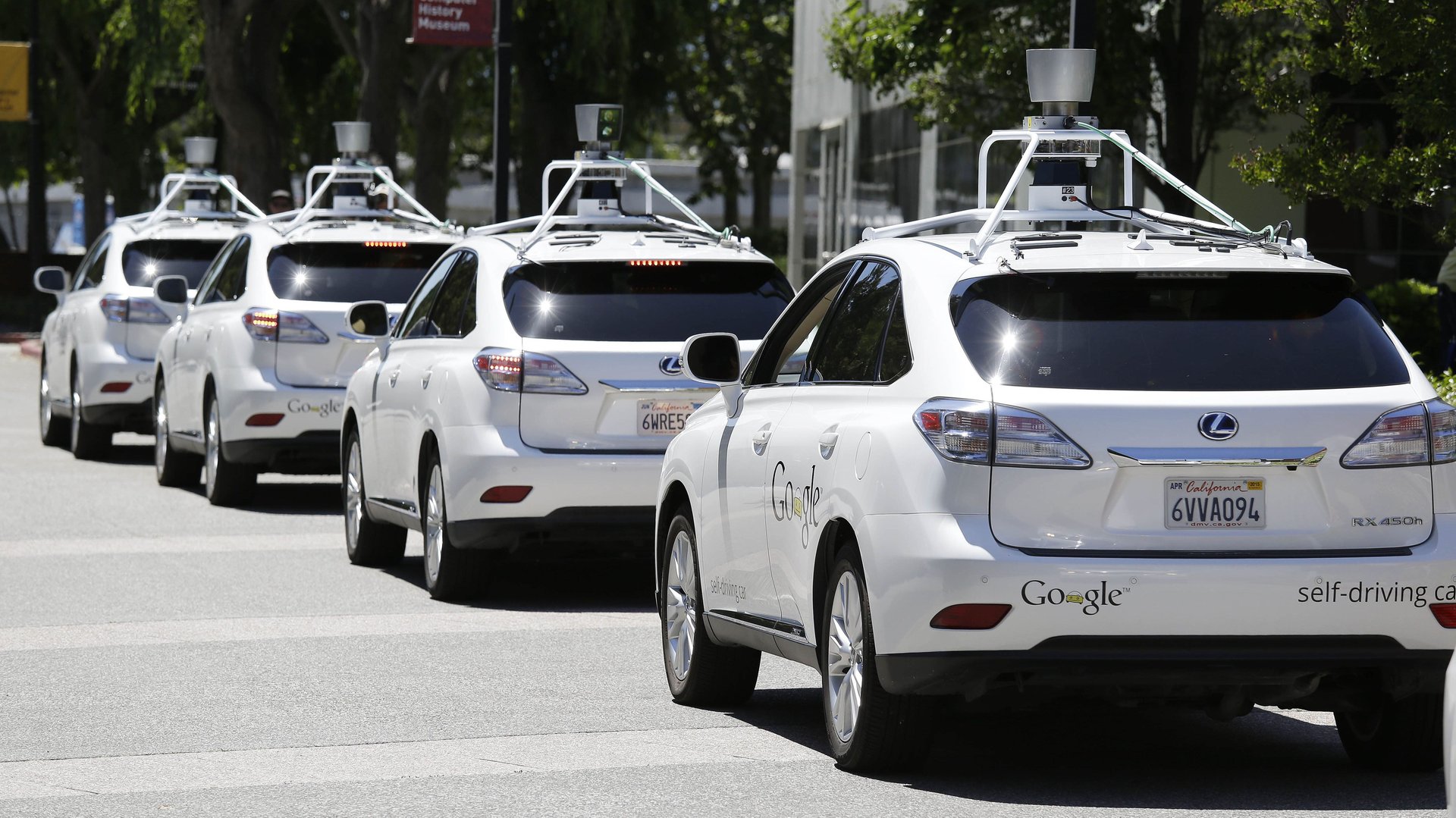A timeline of when self-driving cars will be on the road, according to the people making them
Cars are already driving themselves on roads in California, Texas, Arizona, Washington, Pennsylvania, and Michigan. Though they are still restricted to specific test areas and driving conditions, it’s pretty clear that at some point in the future, completely driverless cars will be a mainstream reality. When that future will arrive, though… depends on who you ask.


Cars are already driving themselves on roads in California, Texas, Arizona, Washington, Pennsylvania, and Michigan. Though they are still restricted to specific test areas and driving conditions, it’s pretty clear that at some point in the future, completely driverless cars will be a mainstream reality. When that future will arrive, though… depends on who you ask.
Predictions for the arrival of fully autonomous vehicles range from a few years to a few decades, a disparity exacerbated by varying definitions of “autonomous.” While some people use this word to describe cars that self-drive only in specific conditions, others peg their estimates to the point at which cars are so autonomous that they don’t even need a steering wheel, or a brake pedal.
“It will happen in very discrete baby steps,” Otto co-founder Lior Ron recently said of the driverless car trajectory. “[It will first] happen in some friendly way to the city, with wide lanes, not many pedestrians, between 1am and 5am. Then it’s going to be actually [driving in] daylight. Then more difficult driving conditions.”
The consequences of that timeline are huge—self-driving vehicles could replace 3 million US jobs, change city infrastructure, and upend the average commute—but actually pinning it down is difficult. As Chris Urmson, who formerly led the self-driving car project at Google parent Alphabet, put it during a 2016 talk at South by Southwest: “How quickly can we get this into people’s hands? If you read the papers, you see maybe it’s three years, maybe it’s 30 years. And I am here to tell you that honestly, it’s a bit of both.”
Here’s a detailed look at when we’ll realize the various definitions of our driverless future, according to the experts and executives hoping to make it a reality.
2017
Elon Musk, CEO of Tesla
What does he mean by autonomous vehicle on the road? According to Business Insider, “A Tesla will drive in fully autonomous mode from LA to New York City.”
2020
Toyota
According to the Wall Street Journal, autonomous for Toyota means allowing “vehicles to get on and off the highway and change lanes without driver input.”
Nissan
Per Mashable, Nissan’s version of autonomy is cars “capable of navigating city intersections and heavy urban traffic without driver intervention.”
2021
BMW
According to CNN, BMW’s driverless future means cars that can “drive on… highways and in urban environments.”
Ford
What does Ford mean by autonomous? According to its website, “high-volume, fully autonomous SAE level 4-capable vehicle in commercial operation.” SAE level 4 refers to a 0-to-5 scale created by the Society of Automotive Engineers. At level 4, the vehicle can handle all driving capabilities, even if a human can’t intervene, but is limited to “some driving modes.” According to the Wall Street Journal, such a car “will only be self-driving in the portion of major cities where the company can create and regularly update extremely detailed 3-D street maps.”
Lyft co-founder John Zimmer
According to a blog post Zimmer authored last year, ”a fully autonomous fleet of cars will provide the majority of Lyft rides across the country” but such cars will start out with “a long list of restrictions. They will only travel at low speeds, they will avoid certain weather conditions, and there will be specific intersections and roads that they will need to navigate around.”
2027
Lior Ron, co-founder and president of Uber-owned automated trucking company Otto
At a recent conference, Ron was asked when ”broad-scale deployment of driverless trucks” would be available. He agreed that it would be about ten years.
2026
Adrian Lund, president of the Insurance Institute for Highway Safety and the Highway Loss Data Institute
Per Automotive News, when Lund mentions autonomous vehicles, he means “a car with no steering wheel or pedals would make it a Level 5 automated vehicle [on the SAE International scale].”
2030
Kia
According to The Verge, Kia’s autonomous cars would be “the kinds… that can pick you up without a driver and leave you somewhere else, without you necessarily having to ever take control.”
2032 to 2047
Mary Cummings, a professor of mechanical, electrical and computer engineering at Duke University
What she means by autonomous: According to the Wall Street Journal, a car that “operates by itself under all conditions, period.”
2035
BCG
According to a 2015 report, BCJ pegs the driverless future as when “12 million fully autonomous units sold a year globally.”
“A ways off”
Edwin Olson, the director of the APRIL robotics lab at the University of Michigan
What he means by autonomous cars on the road: According to Vox, a car that you “can just put your kid in and ship off to school.”